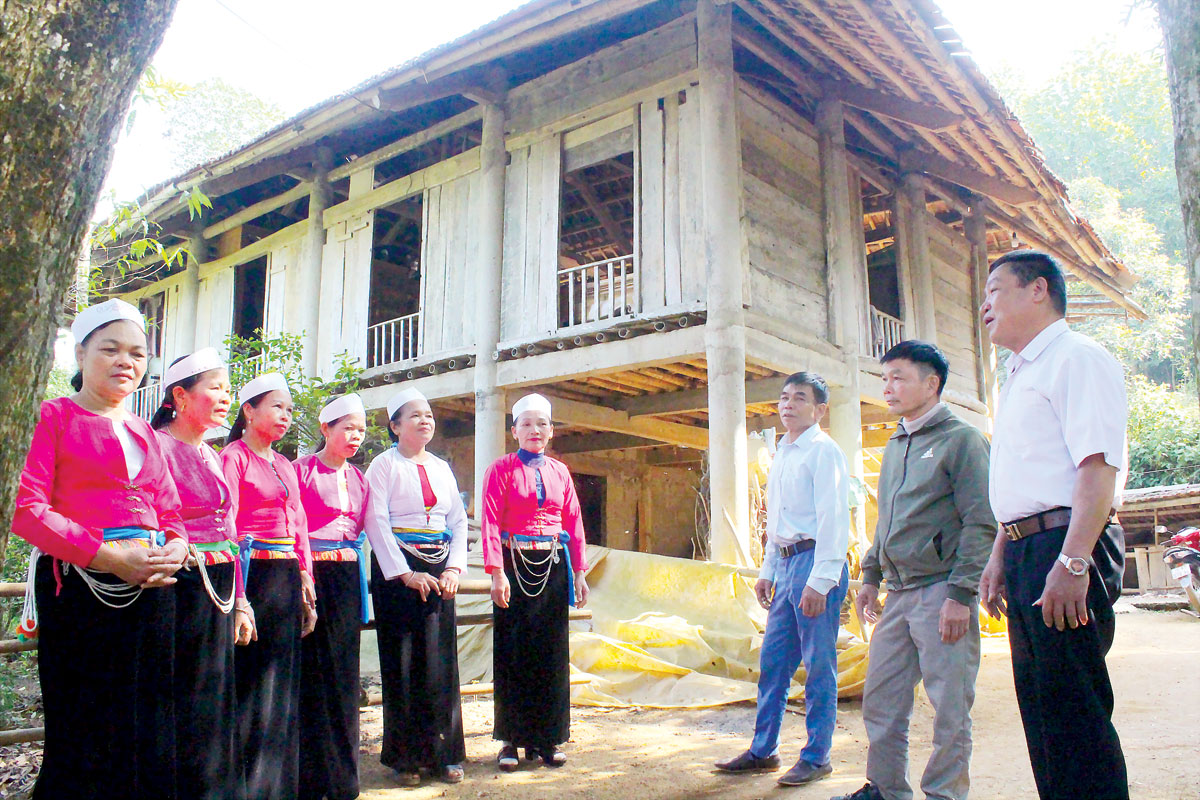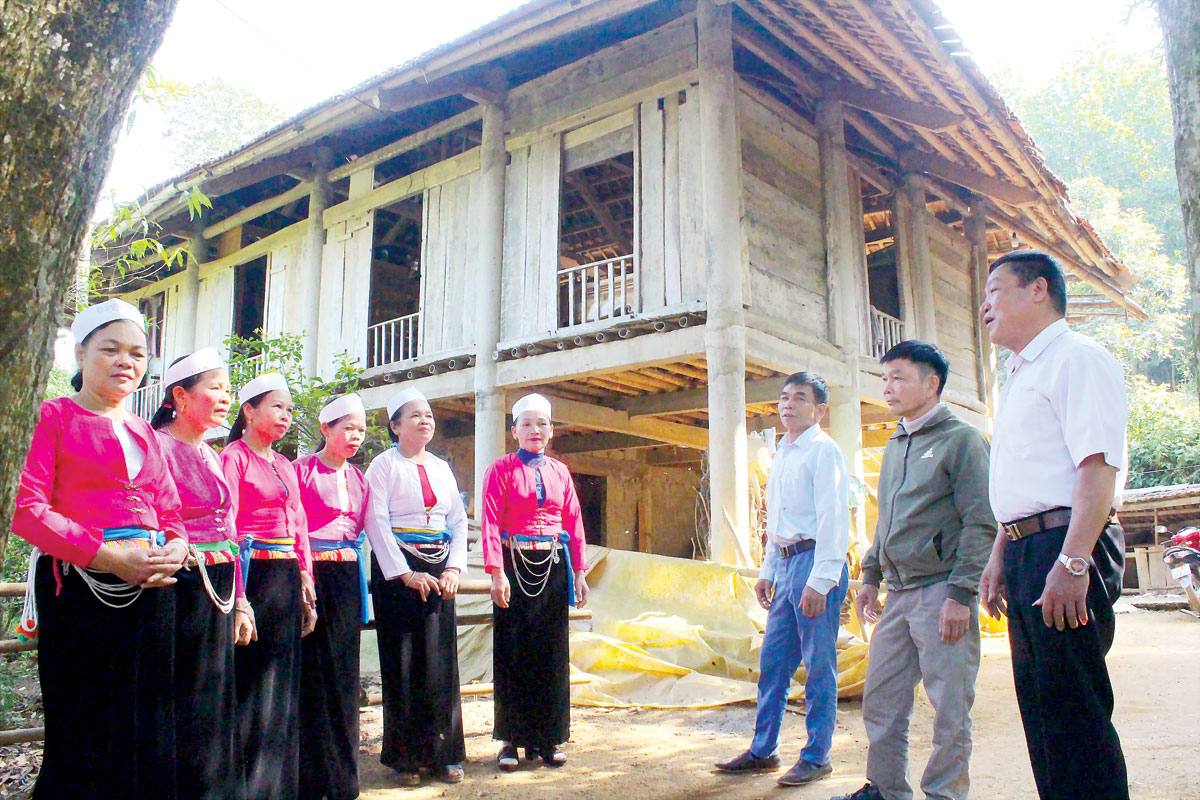
(HBO) – In spite of the change of the social life, Muong ethnic people in Hoa Binh province’s Lac Son district still consciously preserve unique cultural identities of the locality, especially folk songs, said Bui Van Nom, former Secretary of the district Party Committee.

Muong ethnic people in Lac Son exert efforts to preserve popular folk songs.
Nom, who is devoting himself to the collection and preservation of folklore culture
values of the nation, said Muong folk songs are becoming more and more popular in the daily life of the local community.
According to
folklore researcher Bui Huy Vong, Lac Son is considered to be the core zone of
Muong people in Hoa Binh province and their culture.
For a long
time, people here have considered Muong folk songs in general, and Thuong Rang, Bo Meng and Dum singing popular cultural
practices in the daily life. The singing styles have become the
intangible cultural heritage of the locality bearing cultural, historical and
human values.
Local people sing not only on the
occasions of weddings, new house celebrations, festivals, and cultural and
artistic exchanges, Muong folk songs are becoming more and more popular through
the lullabies, when men and women declaring their love to each other while working
in the fields and gardens.
In recent
times, Thuong Rang, Bo Meng and Dum singing has been organised in many
festivals, becoming the highlight in festivals and mass art contests in the
district.
Along with preserving the cultural identity of Muong ethnic people in general, the
local authorities have also paid attention to keeping and developing Muong folk
songs.
As part of efforts to preserve and promote this unique
cultural value, a number of folk singing clubs have been established, such as
Muong Khai and Muong Khoi in An Nghia commune, and Bai Chim in Tan My commune.
Some artists and those who are devoting
themselves to preserving Muong folk songs such
as Bui Thien, Bui Huy Vong, and Bui Van Nom, have organised over 30 performance
exchange programmes, counted over 300 artists singing folk songs, old Muong
songs, and stored nearly 1.000
GB of relevant video and audio data.
Fork song
artist Bui Van Tien in Song Khanh village of Tan My commune, who is head of Bai
Chim Club, said Bua, Rang, Vi and Dum singing styles of Muong people feature epics
and legends, reflect the daily life, customs and beliefs, and express the
desire for a prosperous life of Muong people in Hoa Binh.
The singing styles originated from the working life of the people and are handed downorallyfrom
generation to generation. Local people sing Muong folk songs in festivals of early spring.
Apart from Rang singing, the Muong people in Lac Son also retain Sac Bua
singing in in spring festivals, Nom said. The unique
culture of Muong people has been passed down through generations, bringing in a
strong and long-lasting vitality, becoming a cultural flow imbued with the
ethnic group’s unique cultural values. Muong folk
songs are on the way to be recognized as a national intangible cultural
heritage./.
The People’s Committee of Lac Son district held a ceremony on April 28 to receive the provincial relic certificate for the ancient rock carving site at Suoi Co stream, located in My Thanh commune.
A special music show titled "The country is in the fullness of joy” has been held at Hoa Binh Square in Hoa Binh city in celebration of the 50th anniversary of the liberation of the South and national reunification (April 30, 1975–2025).
The People's Committee of Lo Son commune, Tan Lac district, has organised the local annual traditional stream fishing festival on April 19 - 20.
As a land deeply intertwined with human history and Vietnam’s millennia-long journey of nation-building and defence, Hoa Binh is often revered for its epic tales and legends.
Residents of Hoa Binh boast a rich cultural identity, reflected in their unique language, traditional attire, customs, and folk melodies – described as "sweet as honey, clear as a mountain stream.”
Lac Son district’s Vu ban town held the 2025 Truong Kha temple festival on April 12–13 (the 15th–16th days of the third lunar month). Since its revival in 2019, the festival has been organised every three years, preserving valuable intangible heritage while meeting the community’s cultural and spiritual needs.



